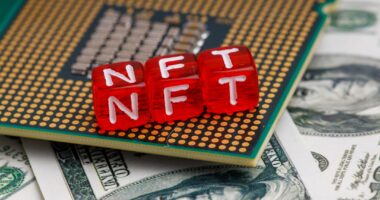Non-fungible tokens (NFTs) have emerged as a significant development in digital asset ownership and trading. These unique digital tokens represent ownership of specific digital items or content, including artwork, music, videos, and even social media posts. Unlike fungible cryptocurrencies such as Bitcoin or Ethereum, NFTs cannot be exchanged on a one-to-one basis due to their individual uniqueness.
NFTs are built on blockchain technology, which provides a secure and transparent method for verifying ownership and authenticity of digital assets. This technological foundation has created new opportunities for creators to monetize their work and for collectors to acquire and trade digital content in previously unavailable ways. The NFT market has attracted a diverse range of participants, including artists, musicians, collectors, and investors.
Creators can now directly monetize their digital works, while collectors and investors can acquire rare and potentially valuable digital assets. The rapid growth and increasing popularity of the NFT market have sparked widespread discussion and analysis among industry professionals, financial experts, and technology enthusiasts.
Key Takeaways
- The NFT market has seen significant growth and attention in recent years, with unique digital assets being sold for high valuations.
- Speculation and hype play a significant role in driving up NFT prices, leading to concerns about the sustainability of the market.
- NFT valuations are often compared to traditional art markets, but the two operate in very different ways and have different underlying value propositions.
- The NFT market bubble poses potential risks and concerns, including the possibility of a market crash and the impact on investors and creators.
- Regulatory and legal considerations are important for NFT valuations, as the market operates in a relatively unregulated space with potential legal implications.
- The future of the NFT market will depend on its sustainability and long-term viability, as well as its ability to address concerns about speculation and market stability.
The Explosive Growth of NFT Valuations
The Rise of NFT Marketplaces
The rise of NFT marketplaces and platforms has played a significant role in driving up valuations, making it easier for creators to mint and sell their digital assets, and for buyers to discover and purchase unique NFTs.
Scarcity and Uniqueness
One of the key drivers of NFT valuations is the scarcity and uniqueness of digital assets. Unlike physical art or collectibles, which can be replicated or mass-produced, NFTs are one-of-a-kind digital tokens that cannot be duplicated. This scarcity has led to a frenzy of bidding and speculation, driving up prices for rare and sought-after NFTs.
Provenance and Authenticity
The ability to prove ownership and authenticity through blockchain technology has added a layer of trust and security to the NFT market, further increasing the perceived value of digital assets. As a result, we have seen record-breaking sales of NFTs, with some pieces fetching millions of dollars at auction.
The Role of Speculation and Hype in NFT Pricing

Speculation and hype have played a significant role in driving up NFT pricing, leading to concerns about the sustainability and long-term viability of the market. The hype surrounding NFTs has been fueled by high-profile sales and celebrity endorsements, as well as media coverage and social media buzz. This has created a sense of FOMO (fear of missing out) among collectors and investors, driving up demand and valuations for NFTs.
Additionally, the speculative nature of the market has led to a “gold rush” mentality, with many participants looking to cash in on the latest trend and make quick profits. The speculative nature of NFT pricing has also led to concerns about market manipulation and price volatility. With limited regulation and oversight in the NFT market, there is potential for bad actors to artificially inflate prices or engage in pump-and-dump schemes.
This can create a false sense of value and lead to unsustainable price bubbles, putting investors at risk of significant losses. As a result, there is growing scrutiny and skepticism surrounding the NFT market, with calls for greater transparency and regulation to protect participants from potential fraud and manipulation.
Comparing NFT Market Valuations to Traditional Art Markets
When comparing NFT market valuations to traditional art markets, it’s important to consider the differences in how value is perceived and determined. In the traditional art world, valuations are often based on factors such as provenance, historical significance, artistic merit, and critical acclaim. Physical artworks are also subject to appraisal by experts and auction houses, providing a level of validation and legitimacy to their value.
In contrast, NFT valuations are driven by factors such as scarcity, uniqueness, and perceived value within the digital realm. Another key difference between NFT market valuations and traditional art markets is the role of intermediaries and gatekeepers. In the traditional art world, galleries, dealers, and auction houses play a central role in determining value and facilitating sales.
These intermediaries provide a level of curation and validation to artworks, helping to establish their worth in the market. In the NFT market, however, there is greater direct access for creators to mint and sell their digital assets without the need for intermediaries. This has led to a more decentralized and democratized approach to valuing digital content, with collectors and investors playing a more active role in determining value.
Despite these differences, there are also parallels between NFT market valuations and traditional art markets. Both rely on the perception of value within their respective communities, whether it’s the art world or the digital asset space. Additionally, both markets are subject to fluctuations in demand, trends, and cultural relevance, which can impact valuations over time.
Potential Risks and Concerns for the NFT Market Bubble
As the NFT market continues to experience rapid growth and surging valuations, there are several potential risks and concerns that have emerged regarding the sustainability of this trend. One of the primary concerns is the possibility of a market bubble, driven by speculation and hype rather than intrinsic value. Bubbles occur when asset prices become detached from their underlying fundamentals, leading to inflated valuations that are not supported by real demand or utility.
If this were to occur in the NFT market, it could result in a sharp correction or crash that could have significant repercussions for investors and participants. Another concern for the NFT market bubble is the potential for oversaturation and dilution of value. As more creators enter the space and mint their own NFTs, there is a risk of flooding the market with an abundance of digital assets, leading to decreased scarcity and desirability for individual pieces.
This could result in a devaluation of NFTs overall, as collectors and investors become overwhelmed by choice and lose interest in acquiring new digital assets. Additionally, there are concerns about the environmental impact of NFTs, particularly in relation to energy consumption and carbon emissions. The process of minting NFTs on blockchain networks requires significant computational power, which can contribute to carbon footprints and environmental harm.
As awareness of climate change and sustainability grows, there is increasing scrutiny on the environmental impact of digital technologies like NFTs.
Regulatory and Legal Considerations for NFT Valuations

Standardization and Regulation of Valuation Methodologies
One key area of concern is the lack of standardization and regulation around valuation methodologies for NFTs. Unlike traditional assets such as stocks or real estate, there are no established frameworks or guidelines for determining the value of digital assets. This lack of clarity can lead to inconsistencies in pricing and valuation practices within the NFT market.
Investor Protection and Consumer Rights
Another regulatory consideration for NFT valuations is related to investor protection and consumer rights. With the rise of speculative trading and investment in NFTs, there is a need for greater transparency and disclosure around risks and potential returns for participants. This includes clear information about the provenance and authenticity of digital assets, as well as any associated rights or royalties for creators.
Intellectual Property Rights and Copyright Ownership
In addition to valuation methodologies and investor protection, there are also legal considerations surrounding intellectual property rights and copyright ownership for NFTs. The unique nature of digital tokens raises questions about who holds the rights to reproduce or display digital content, as well as how royalties are distributed for secondary sales of NFTs. These legal complexities require careful consideration and oversight to ensure fair compensation for creators and protection against infringement.
The Future of the NFT Market: Sustainability and Long-Term Viability
Looking ahead, the future of the NFT market will depend on its ability to address concerns around sustainability and long-term viability. One key area for improvement is in developing more sustainable practices for minting and trading NFTs. This includes exploring alternative blockchain technologies that are more energy-efficient, as well as implementing carbon offset programs to mitigate environmental impact.
By prioritizing sustainability, the NFT market can demonstrate its commitment to responsible innovation while addressing concerns about energy consumption. Another important factor for the future of the NFT market is establishing greater transparency and trust through improved regulation and oversight. This includes standardizing valuation methodologies, implementing investor protections, and clarifying legal frameworks for intellectual property rights.
By creating a more robust regulatory environment, the NFT market can instill confidence among participants while mitigating risks associated with speculation and fraud. Furthermore, the long-term viability of the NFT market will depend on its ability to evolve beyond hype-driven valuations towards sustainable utility and real-world applications. This may involve exploring new use cases for NFTs beyond art and collectibles, such as in gaming, virtual real estate, or identity verification.
By expanding the scope of NFT applications, the market can diversify its value proposition while attracting a broader range of participants. In conclusion, the explosive growth of the NFT market has brought about exciting opportunities for creators, collectors, investors, and technologists alike. However, it also raises important considerations around valuation methodologies, speculation-driven pricing, regulatory oversight, environmental impact, legal complexities, sustainability practices, long-term viability, transparency measures among others that need to be addressed for its continued success.
By navigating these challenges thoughtfully while embracing innovation responsibly, the NFT market can pave the way for a more inclusive, sustainable future for digital ownership and creativity.
FAQs
What is the current worth of the NFT market?
The NFT market is currently worth billions of dollars, with sales of digital assets reaching record highs in recent years.
What factors are contributing to the inflated values in the NFT market?
Several factors contribute to the inflated values in the NFT market, including hype and speculation, celebrity endorsements, and the scarcity of certain digital assets.
How are inflated values propelling a digital bubble in the NFT market?
Inflated values in the NFT market are propelling a digital bubble by creating a speculative frenzy, leading to unsustainable price levels and potential market volatility.
What are the potential risks associated with the inflated values in the NFT market?
The potential risks associated with inflated values in the NFT market include market manipulation, fraud, and the possibility of a market crash leading to significant financial losses for investors.
What are some criticisms of the inflated values in the NFT market?
Critics argue that the inflated values in the NFT market are driven by hype and speculation rather than intrinsic value, leading to concerns about the long-term sustainability of the market.





